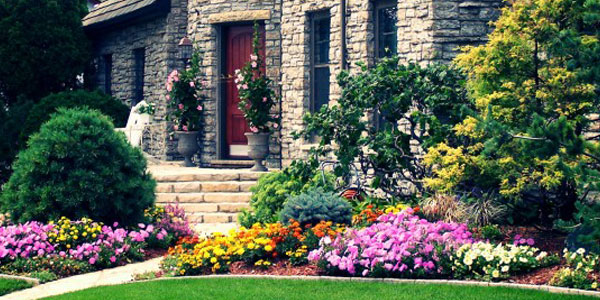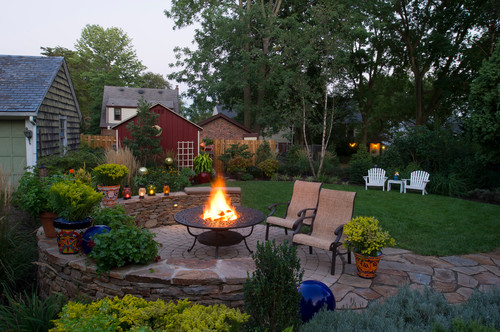It shouldn’t be new information that pollinators, especially bees, are having a hard time right now. There are a variety of forces, man-made and environmental, that are negatively affecting pollinator populations. Fortunately, having a pollinator-friendly garden also means having a garden that is full of bright and fragrant flowers throughout the growing season.

Why attracting pollinators is important
In the United States, up to a third of our agriculture output is dependent on pollinators. Bees, butterflies and hummingbirds all play a vital role in the production of healthy fruit and vegetables. They are encourage plant diversity and help maintain a healthy ecosystem.
How to create a pollinator-friendly yard
Fortunately, creating a bee and butterfly friendly yard isn’t that hard and the results are often stunning.
Planting pollinator-friendly plants
Start by planting nectar- and pollen-rich flowers. Native wildflowers are attractive to pollinators and will thrive in your area. At Native Plant Finder, you can see a selection of plants that are native to your zip code.
By planting a succession of blooming flowers and shrubs, you’ll be able to ensure that nectar and pollen are available through the growing season. Dill, fennel and milkweed are other great options for attracting butterflies.
The University of Minnesota Extension is another resource for choosing pollinator-friendly plants that will thrive in Minnesota.
Choose organic
Many pesticides and herbicides are toxic to pollinators. Even if those chemicals seem useful in the short term, it’s good to remember that they are also killing beneficial organisms when they are used. Using a more organic approach to weed and pest control is safer and more effective.
Provide shelter
Butterflies, bees and other pollinators need shelter to thrive and protect themselves from predators. Shelter can be created organically by letting your grass grow longer, or leaving leaves and other organic material undisturbed. You can also use artificial nesting boxes to increase the number of pollinators in your area.
Provide food and water
Pollinators need pollen and nectar to thrive. Consider adding special feeders to attract hummingbirds and butterflies.
They also need access to still water and can benefit from birdbaths and other small pools of standing water.
Plants to attract pollinators
- Purple coneflower
- Dill
- Hollyhock
- Joe-Pye weed
- Globe centaurea
- Peony
- Turtlehead
- Swamp milkweed
- Yarrow
- Queen Anne’s lace
- Tawny daylily
- ‘Marine’ heliotrope
- Gayfeather
- Butterfly weed
- Petunia
- Mountain bluet
- Annual aster
- Autumn Joy’ sedum
- Rock cress
- French marigold
- Happy Returns’ daylily
- Blanket flower
- Nasturtium
- Goldenrod

 Contact 612-483-GOAT
Contact 612-483-GOAT